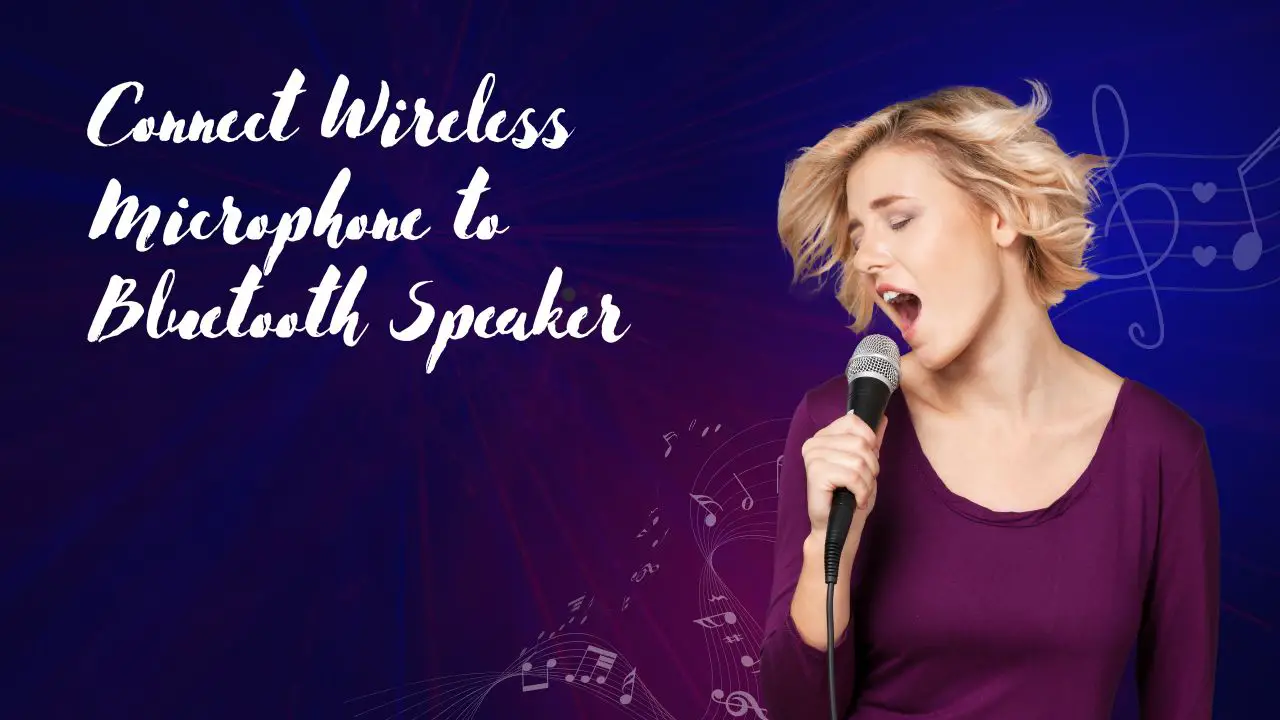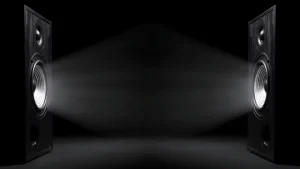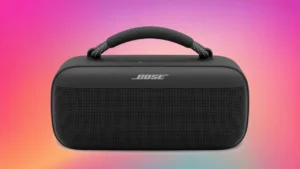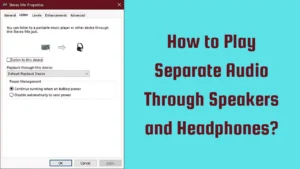You know what? The answer is pretty straightforward. See, Bluetooth microphones and speakers work like assistants, they only get messages from the boss – or as we call it, the master device.
If you’re looking to connect a wireless microphone to a Bluetooth speaker, you’ll need a few essential components to make it happen. Depending on the type of Bluetooth speaker you have, you may require a receiver and transmitter, or you may be able to use a standard receiver with an AUX input. Alternatively, you can use a master device like a computer or phone along with communication software to connect your microphone to the speaker.
In This Article:
How to Connect a Wireless Microphone with Bluetooth Speaker?
If you’re trying to hook up a Bluetooth mic to a Bluetooth speaker, there are a couple of things you need. First, you gotta have a receiver or transmitter, or you can just use a computer and some communication software. Once you’ve got that setup, you’re good to go!
Option 1: Use a Receiver and Transmitter (Bluetooth speaker With no AUX Input)
If your Bluetooth speaker doesn’t have an AUX input, you can use a receiver and transmitter to make the connection. Here’s what you’ll need and the steps to follow:
You Will Need:
- A receiver
- Bluetooth transmitter
- Bluetooth speaker
- Wireless microphone
Steps to Follow:
- Plug the Bluetooth transmitter into the AUX port of the receiver.
- Plug in the receiver and turn it on.
- The receiver will power on and activate the Bluetooth signal, allowing your Bluetooth-enabled device to connect to it.
- Turn on your wireless mic and put it in pairing mode.
- The transmitter will activate a Bluetooth signal that connects to your wireless mic.
- Pair the Bluetooth transmitter with your wireless speaker.
- Once the wireless-transmitter-receiver-Bluetooth speaker connection is successful, you can use the mic without being tethered to the speaker.
Pro Tip: Ensure that the wireless receiver and transmitter are compatible with your Bluetooth speaker and the wireless mic to avoid connection issues.
Option 2: Use a Standard Receiver
If your Bluetooth speaker has an AUX input, connecting the microphone to the speaker is a bit easier. Here’s what you’ll need and the steps to follow:
You Will Need:
- Mini AUX to the standard auxiliary adapter
- AV to AUX cable
- Wireless microphone
- Wireless microphone receiver
- Bluetooth speaker
Steps to Follow:
- Plug in the speaker and receiver to a power source.
- Plug the AV cable into the wireless receiver.
- Plug the other end of the AV cable into the AUX adapter.
- Plug the adapter into the speaker.
- Turn on the speaker and adjust the volume.
- Turn on the receiver and adjust the volume as well.
- Turn on the wireless microphone and let it connect to the receiver.
Option 3: Use a Master Device and Communication Software
You can also use a master device like a computer or phone along with communication software to connect your microphone to the speaker. Here’s what you’ll need and the steps to follow:
You Will Need:
- A master device (computer or phone)
- Communication software such as Audacity or communication apps such as BTAudioCast for Apple or BT Mono Connect for Android
- Wireless microphone
- Bluetooth speaker
Steps to Follow:
- Connect the wireless microphone to the master device.
- Turn on the Bluetooth speaker and put it in pairing mode.
- Open the communication software on the master device and select the Bluetooth speaker from the list of devices.
- While on the app, select the wireless app as the input device from the list of devices.
- Begin streaming the audio from the wireless mic to the Bluetooth speaker.
- Adjust the volume on the Bluetooth speaker as needed.
Connecting a wireless microphone to a Bluetooth speaker is a straightforward process, but it’s important to ensure that you have all the necessary components and follow the steps correctly. With the right tools and a little know-how, you can enjoy high-quality sound without the constraints of wires and cables.
How Do Wireless Mics Work?
Wireless microphones are a type of microphone that allows users to move around freely without being tethered to a physical device. They work by transmitting the audio signal from the microphone to a receiver unit, which then sends the signal to a sound system or other output devices.
The microphone itself contains a small capsule that converts sound waves into an electrical signal. This signal is then sent to a transmitter unit, which converts the electrical signal into a radio frequency signal that can be transmitted wirelessly.
The transmitter sends this signal to the receiver unit, which receives the signal and converts it back into an electrical signal. The receiver then sends the electrical signal to the sound system or other output devices, which amplifies the signal and converts it into audible sound.
Wireless microphones can operate on different frequency ranges depending on the model and intended use. Some models use UHF or VHF frequencies, while others use digital transmission methods. Different frequency ranges can offer different levels of interference resistance, range, and sound quality.
Overall, wireless microphones provide a convenient way for performers, presenters, and other users to move around freely while still being able to communicate or perform. However, it’s important to use them properly and in compliance with regulations to avoid interference or other issues.
Frequently Asked Questions
How Do I Connect My Regular Microphone To My Bluetooth Speaker?
You can connect your regular microphone to a Bluetooth speaker by using a Bluetooth transmitter that has a 3.5mm audio jack input. Connect your microphone to the audio jack input, then pair the Bluetooth transmitter with your Bluetooth speaker. Your microphone audio will now play through the Bluetooth speaker.
How Do I Connect A Regular Mic To A Regular Speaker?
To connect a regular microphone to a regular speaker, you need an amplifier or a mixer. Plug the microphone into the input of the amplifier/mixer and then connect the output of the amplifier/mixer to the input of the speaker. Adjust the volume and other settings as needed to get the desired sound output.
How Do I Connect My Wireless Microphone To A Soundbar?
To connect a wireless microphone to a soundbar, make sure the microphone is paired with the soundbar’s Bluetooth. Then, switch the soundbar to the correct input mode, and adjust the microphone volume. Some soundbars may require additional setup steps or accessories, so refer to your user manual for specific instructions.
Can I Use My Bluetooth Speaker As A Mic?
Yes, you can use your Bluetooth speaker as a mic, but the quality might not be as good as a dedicated microphone. To do so, you need to make sure that your speaker has a built-in microphone and supports the Hands-Free Profile (HFP) protocol. Pair the speaker with your device and select it as the input device for your audio recording or communication app.




